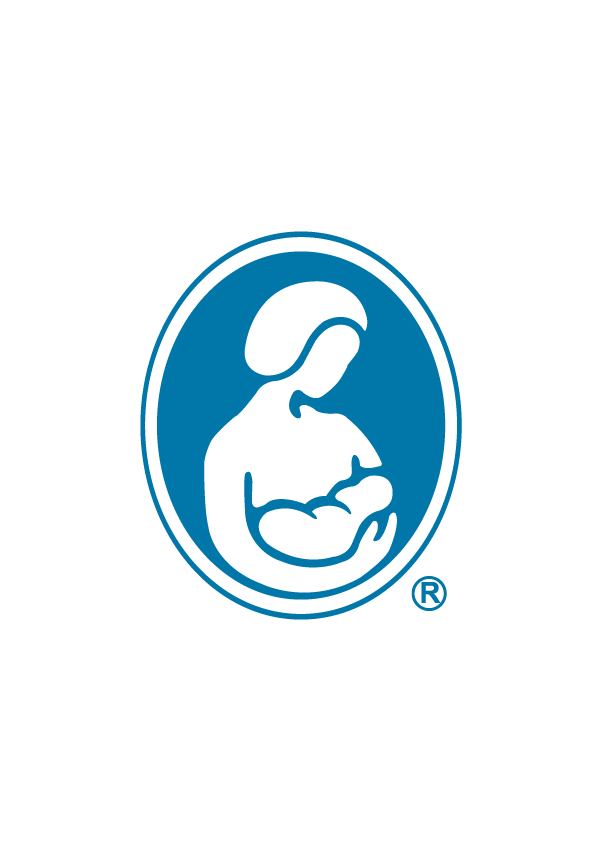点击上方国际母乳会LLL 设为星标,获取哺乳信息
“一知半解很危险。这一点,在对前奶、后奶及其对母乳喂养影响的持续争议中,再真实不过了。围绕这些概念的误解引发了焦虑和不安,甚至导致了母乳喂养问题和过早地断奶。”
摘自《Worries About Foremilk and Hindmilk》一书,作者南希·莫尔巴赫,国际母乳会哺乳辅导,国际认证泌乳顾问,国际泌乳顾问协会终身成就荣誉。
是什么决定了母乳的脂肪含量?
人乳中的脂肪在乳房中合成时,含量相对稳定。
每次哺乳时,脂肪含量取决于乳房的充盈程度。随着乳房变得越来越软,脂肪含量会逐渐增加,因为乳脂球在连续的喷乳反射中被“挤出”了乳房。
较长的哺乳间隔意味着在下一次哺乳开始时,最初的乳汁脂肪含量较低,因为当乳汁在两次哺乳之间储存于乳房内时,脂肪会粘附在乳腺泡/导管上。因此,上一次哺乳之初的脂肪含量可能不同于下一次哺乳开始时的脂肪含量。两次哺乳的间隔时间越长,上一次哺乳结束到下一次哺乳开始时的脂肪含量下降得越多。
哺乳时间长短无关紧要——有些婴儿每边乳房吃4分钟就吃饱了,而另一些婴儿则需要花40分钟才能吃到同样的奶量。不要通过哺乳的时间长短来判断脂肪含量的多少,就让孩子做主吧。
什么是乳糖过载?
(以往有时也称为“前奶/后奶摄入不平衡”)
没有所谓的“前奶”和“后奶”,某种意义上,这两种母乳没什么不同。这些术语仅描述了乳汁的脂肪含量随着乳房被吸软而增加的情况。
“前奶”是指婴儿刚开始吃一顿奶时吃到的乳汁,“后奶”是指这顿奶吃完时可以挤出来的母乳。“前奶”不一定脂肪含量“低”,因为这取决于上一次哺乳到现在的时间长短。
脂肪会减缓乳汁通过婴儿肠道的转运。如果婴儿摄入了大量脂肪含量较低的母乳,乳汁就会更快地通过婴儿肠道,但(译者注: 乳糖酶)来不及消化大量的乳糖。这就导致乳糖在肠道里产生了发酵。
我怎么辨别宝宝是不是乳糖过载?
症状非常有特点:便便呈绿色、泡沫状、喷射状排出,胀气(放屁)以及疼痛明显(常常尖声哭闹,而不只是偶尔的哼唧)。如果宝宝感觉舒服、排黄色便便的话,就不会有母乳脂肪含量的问题!
还有其它一些原因可以解释为什么婴儿有绿色便便,包括母乳摄入的总量不足、生病、服用药物/补充剂以及过敏。单纯只有绿便(而没有肠胃胀气/疼痛)说明不了是乳糖过载。一个健康发育、感觉舒适的宝宝,偶尔有绿色便便的话,可以放心不用管。
有哪些治疗乳糖过载的方法?
最需要去做的可能就是加深含乳并鼓励宝宝在每侧乳房上想吃多久都行。
半躺或侧躺的哺乳姿势可以帮助宝宝控制较快的乳汁流速。
更频繁地哺乳有助于宝宝每次摄入适量的母乳,避免喝到一顿积攒了很大的量但脂肪含量相对较低的母乳。
限制宝宝每次哺乳只吃一侧乳房是否合适?
重要提示: 正常的哺乳方式是让宝宝从一侧乳房上吃尽可能多的母乳,再换另一侧。
大多数婴儿会两侧乳房都吃,至少有些时候会这样。故意不喂第二侧乳房是一种减少母乳量的策略(即让每侧乳房都在较长时间内不喂奶) ,只有在明确的证据表明了母亲母乳量过多的情况下,限制宝宝只吃一侧乳房才是恰当的:
婴儿控制乳汁的流速显然很费力(呕吐、呛咳,还有喷乳反射时松开乳房) ,对此感到痛苦沮丧,或者婴儿有乳糖过载的症状:便便呈绿色、泡沫状、喷射状排出,胃胀气和明显的疼痛。
其它帮助婴儿控制乳汁流速的措施都试过了,但情况仍然没有改善。
以及婴儿生长发育特别快(每周至少增加340-450克;生长曲线向上跨越了百分位线)。
请注意——有特殊情况的婴儿(早产、生病、舌系带过紧等)可能无法控制正常的乳汁流速;这些婴儿需要更多的支持,而不是更少的母乳!
婴儿生长缓慢会有哪些影响?
经过相关健康状况的筛查后,体重增长低于正常标准的婴儿存在的问题是奶量摄入不足,而不是脂肪摄入量不足(除非他们也有乳糖过载的具体症状:呈绿色、泡沫状、喷射状排出的大便,胃胀气和明显的疼痛)。
不给这样的宝宝喂第二边(甚至第三边、第四边……)乳房将会进一步影响母乳产量和摄入奶量。(译者注:如果想增加摄入量,一顿哺乳可以左右乳房来回提供n次。)
想要支持母乳喂养,我们需要解决排出乳汁(含乳吸吮和/或挤奶的技巧) 和哺乳管理(哺乳/挤奶的频率)的有效性,以及必要时,采取措施来增加产奶量并为宝宝补充额外的奶。
任何生长异常缓慢的婴儿都应接受医生的评估和治疗。
作者:杰恩乔伊斯,国际母乳会哺乳辅导,英国母乳会。写于2017年
Fat Content of Breastmilk – FAQs
“A little knowledge can be a dangerous thing. This has never been so true as in the ongoing debate about foremilk and hindmilk and their impact on breastfeeding. The misunderstandings around these concepts have caused anxiety, upset, and even led to breastfeeding problems and premature weaning.”
Nancy Mohrbacher, LLL Leader, IBCLC, FILCA Worries About Foremilk and Hindmilk
What determines fat content of breastmilk?
●Fat content of human milk is relatively constant as it is synthesized in the breast.
●Fat content during a feed is determined by the fullness of the breast. Fat content increases gradually as the breast becomes emptier, as fat globules are “forced” out of the breast by successive milk ejections.
●A longer feed interval means lower initial fat content at the start of the next feed, because fat adheres to the alveoli/ducts while milk stands in the breast between feeds. Therefore, the fat level at the start of one feed may not be the same as the fat content at the start of the next. The longer the gap between feeds, the greater the reduction in fat content from the end of one feed to the beginning of the next.
●Length of feed is irrelevant – some babies take a full feed in 4 minutes per side while others take 40 minutes to get the same amount. You can’t tell anything about fat content from the length of the feed, so let the baby determine it.
●There is no such thing as “foremilk” and “hindmilk” in the sense that they are not different kinds of milk. The terms simply describe the way that fat content of milk increases as the breast is drained. “Foremilk” is defined as the milk available initially when a baby starts feeding, “hindmilk” as the milk that can be expressed at the end of a feed. “Foremilk” is not necessarily “low” in fat, as it it depends on how much time has passed since the previous feed.
●Fat slows down the transit of milk through the baby’s gut. If a baby takes a lot of milk that is relatively low in fat, it can rush through the gut faster than the milk sugar (lactose) can be digested. This leads to fermentation in the gut.
How do I tell if a baby has lactose overload?
●The symptoms are very specific: GREEN, FROTHY, EXPLOSIVE stools, FLATULENCE (passing wind) and significant PAIN (a lot of screaming, not just occasional complaining). A comfortable baby with yellow stools does NOT have a problem with milk fat content!
●There are several other reasons why a baby might have a green stool, including insufficient total milk intake, illness, medication/supplements and allergy. A green stool ALONE (without flatulence/pain) is not indicative of lactose overload. In a thriving, comfortable baby, an occasional green stool can safely be ignored.
What is the remedy for lactose overload?
●All that may be required is to deepen attachment and encourage the baby to feed for as long as they want on each breast.
●Laid-back or side-lying positioning can help a baby to manage a fast milk flow.
●More frequent feeds can help a baby take in manageable amounts and avoid build-up of large volumes of relatively “lower-fat milk”.
Is it ever appropriate to limit a baby to one breast per feed?
IMPORTANT: Normal feeding etiquette is to let the baby take as much milk as they want from the breast, then offer the next. Most babies will take both breasts, at least some of the time. Deliberately withholding the second breast is a strategy that will REDUCE MILK SUPPLY (by leaving each breast unused for a longer period), limiting a baby to one breast is ONLY appropriate where there is clear evidence that the mother has an OVERSUPPLY of milk:
°The baby is clearly struggling to manage milk flow (gagging, spluttering, coming off the breast when milk ejects) and is distressed by this and/or the baby has the symptoms of lactose overload: GREEN, FROTHY, EXPLOSIVE stools, FLATULENCE and significant PAIN.
°Other measures to help the baby to manage milk flow have been tried but the situation has still not improved.
°AND the baby is growing rapidly (gaining at least 340- 450g/12-16oz per week; growth trajectory crossing percentile lines upwards).
Be aware – a compromised baby (premature, unwell, tongue-tied etc.) may not be able to manage a normal milk flow; this baby needs more support, not less milk!
What are the implications for a slow-growing baby?
●A baby whose weight gain is below normal parameters (and has been screened for relevant health conditions) has a problem with inadequate milk VOLUME, NOT fat intake (unless they also have the specific symptoms of lactose overload: GREEN, FROTHY, EXPLOSIVE stools, FLATULENCE and significant PAIN).
●To withhold the second (& third, fourth…) breast from this baby would be to further compromise milk supply and intake.
●Feeding support needs to address EFFECTIVENESS of milk removal (attachment at the breast and/or expression technique), feeding MANAGEMENT (frequency of feeds/expressions) and if necessary, steps taken to increase milk PRODUCTION and provide additional milk for the baby.
●Any baby who is growing unusually slowly should be under the care of a doctor.
Written by Jayne Joyce for LLLGB, LLL Leader 2017

资料来源Source:


END
作者:Jayne Joyce
翻译:传艳
审稿:Lynn、Marien、郭燕

找到我们
微信公众号|视频号|小红书|抖音|新浪微博|今日头条|哔哩哔哩|优酷
搜索关键字“国际母乳会LLL”


更多阅读资料,
欢迎大家访问“国际母乳会LLL”官网:
https://www.muruhui.org/
分享
收藏
点赞
在看

正如我们的志愿者在内部会议中提到,投身公益事业后才知道做公益也是有成本的!你的支持和赞赏可以让更多的妈妈获益!
本篇文章来源于微信公众号: 国际母乳会LLL
